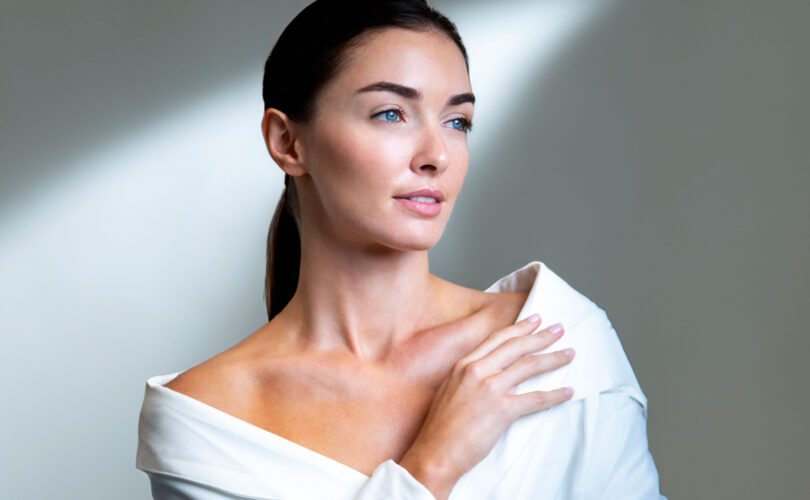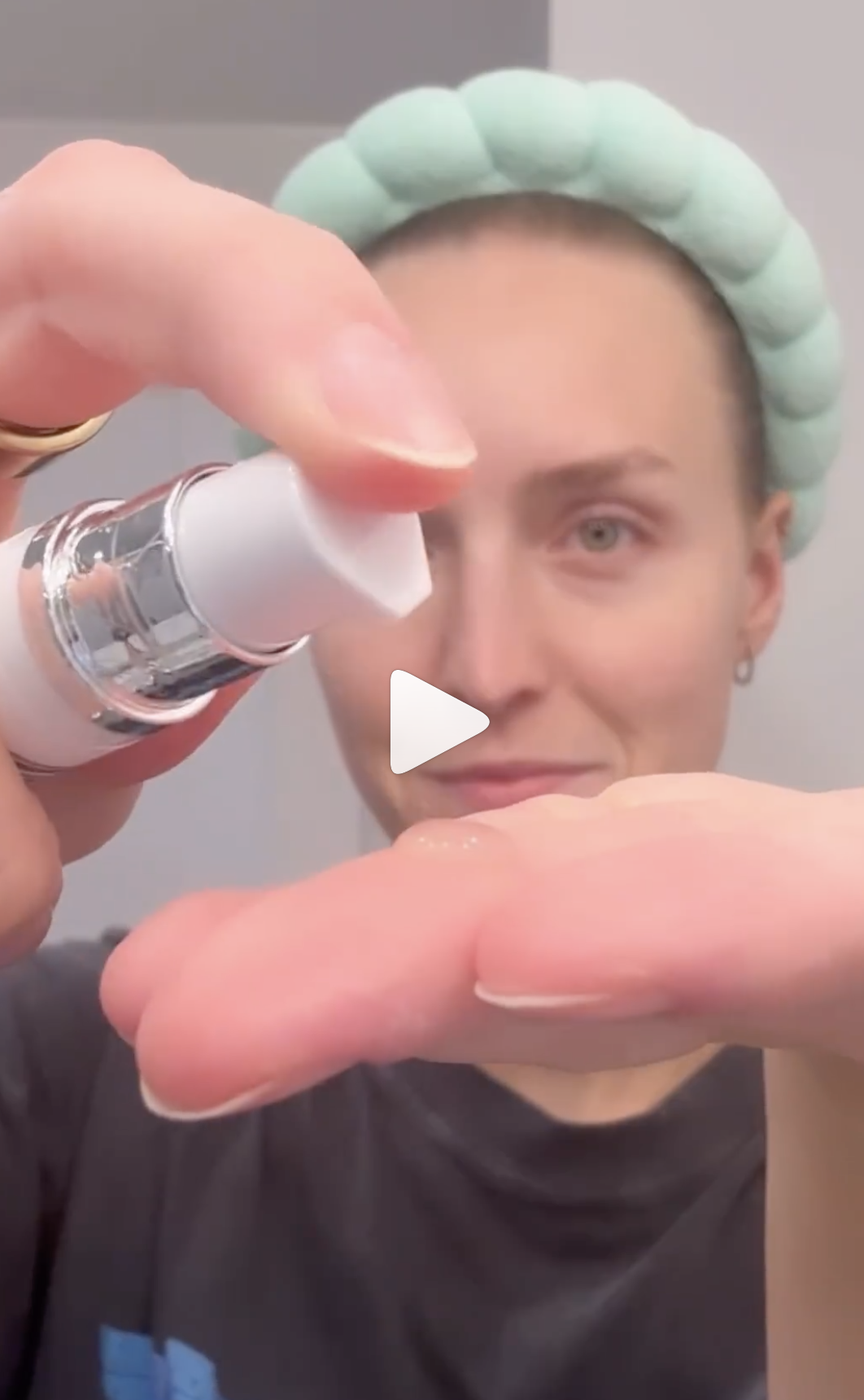Combination skin is the most common skin type among our client base, many of them born from 1997 to 2012 and known as Generation Z. While this age group has been characterized as having little brand loyalty and trust, I believe that as estheticians, it is important to address the needs of this client, to say that we hear you, we listen to you and to ask what we can do for you.
Gen Z comprises 40% of total US consumers, and is responsible for $143 billion in buying power. According to CNN, thanks to Instagram, TikTok and Zoom, this generation is spending more time than ever looking at their own faces. This has led to an interest in routines and services that can help in and preventing signs of aging, or “prejuvenation.” These can range from at-home skin care programs to medi-spa “tweakment” services such as “baby botox”.
According to “Prejuvenation: The Global New Anti-Aging Trend”published in the Aesthetic Surgery Journal Open Forum, “Gen Z, being the first digital generation, relies heavily on social media and the internet for skincare and aging advice, leading to a dynamic sharing and dissemination of information on aesthetic dermatology within this generation. Consequently, prejuvenation has become a trending topic across all media platforms.”
All of this information overload can lead to misinformation, however. Without proper advice and consultation from a skin care professional, the problems Gen Z are seeing such as dryness and dehydration may not be related to aging so much as product misuse, especially if they have oily or combination skin from overuse of improperly formulated products for their skin type.
Loyalty and trust is built from an early age, and can create a client base that stays with you through all the stages of their skin care needs.
Treating Combination Skin
Combination skin is the most common skin type, and is the most commonly mistreated skin at home, but can be overlooked in a treatment menu. Combination skin can affect people of all ages, from Gen Z teens to mature skin. It is characterized by an oily forehead, nose and chin —the area of the face known as the “T-Zone,” —-with drier areas on the periphery of the face, such as the cheeks. The condition manifests because of over-active sebaceous gland activity in the T-Zone, which creates excess sebum, leading to blackhead and pustule formation. At the same time, the area on the periphery of the face has under-active sebaceous glands, resulting in dry, flaky skin and even a compromised skin barrier.
This skin type can be greatly affected by the environment, becoming oilier during the summer months due to heat and humidity, while becoming dry in the winter due to wind and lower humidity. This skin type can also result in dehydration, due to improper product use. One study found that participants with combination skin type were 1.63 times more likely to have sensitive skin than participants with neutral skin.
The greatest damage a client can do when treating combination skin at home is to use overly drying products that address the oily T-Zone, yet cause the outer area of the cheeks to become dehydrated. This causes the skin acid mantle to be disrupted, and cause an imbalance in the skin’s pH. Skin needs to be within 4.5 to 5.5 acid range levels, so it is essential to use products that will help maintain the acid balance in the skin.
Combination skin’s unique set of concerns, which include presenting oily and dry, dehydrated skin at the same time, as well as moisture barrier and pH disruption have been difficult to treat in the past. This is why I have created new protocols, treatments and products to make it possible to create the perfect balance on the skin, such as the T-Zone Balance Classic Facial, a protocol endorsed by CIDESCO International, and the T-Zone Balance Hydrating Serum with Hyaluronic Acid and Vitamin C.
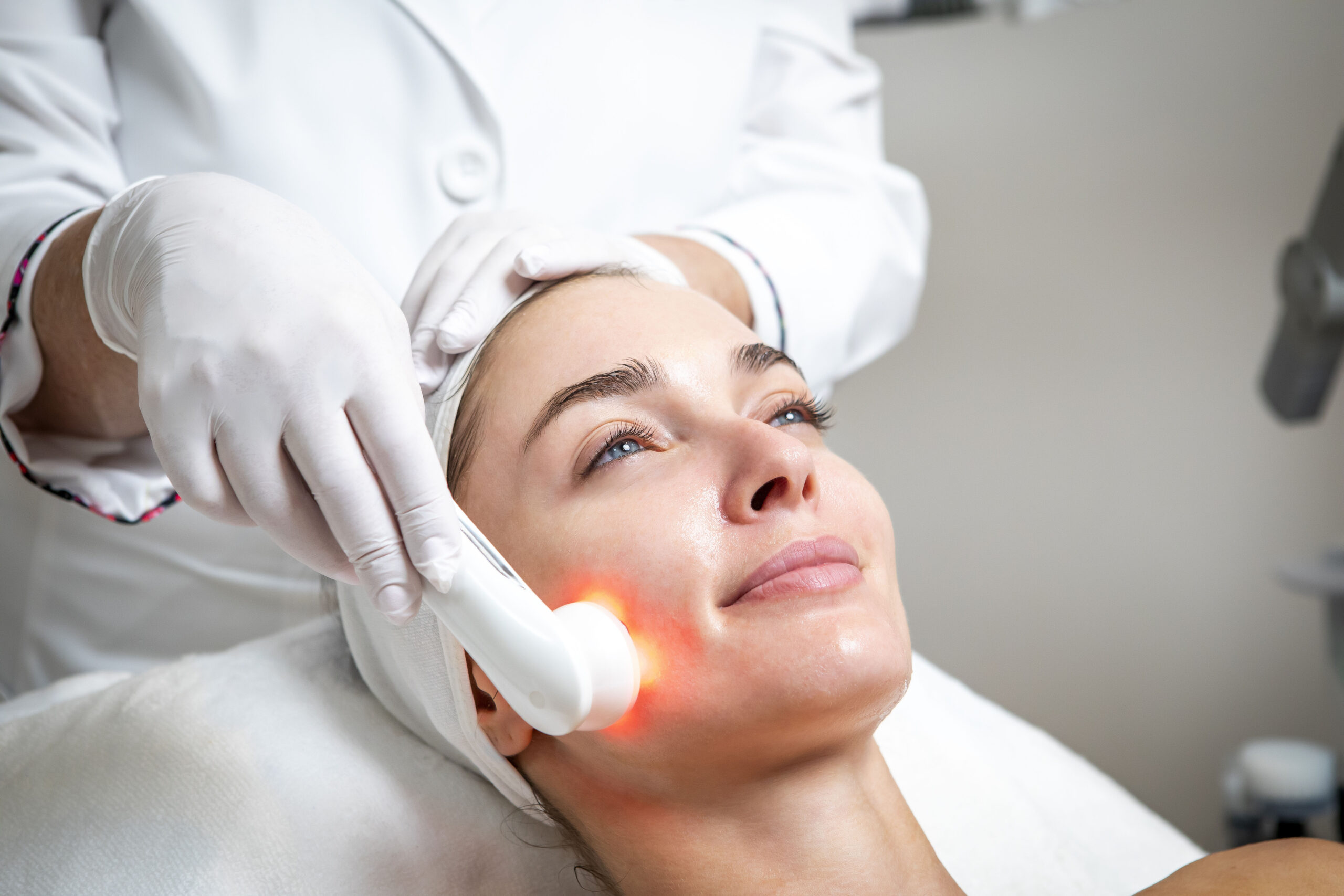
Launched at the Repêchage Day of Empowerment in December, 2023, these treatments and products incorporate ingredients such as Seaweeds, including Laminaria Digitata, which contains 12 vitamins, 18 amino acids, 42 trace elements and minerals, and phlorotannins help to provide the skin with the key elements your skin needs for deep surface hydration and balance. Niacinamide (Vitamin B3) is known for its multiple skin benefits, including reducing the appearance of oil, fine lines and wrinkles, and helping improve the overall appearance of skin texture, firmness and elasticity.
Hyaluronic Acid is a natural moisturizing polysaccharide prevalently found in the skin that is known to hold 1000X its weight in water. Sodium Hyaluronate is the sodium salt of Hyaluronic Acid and is the most common form of Hyaluronic Acid that helps to increase moisture in the skin. Hydrolyzed Hyaluronic Acid has a lower molecule weight than Sodium Hyaluronate so it can penetrate deeper into skin surface. When different molecular weights of Hyaluronic Acid are used in a formulation, it can have a synergistic effect, performing multiple skin care functions to enhance skin moisturization.
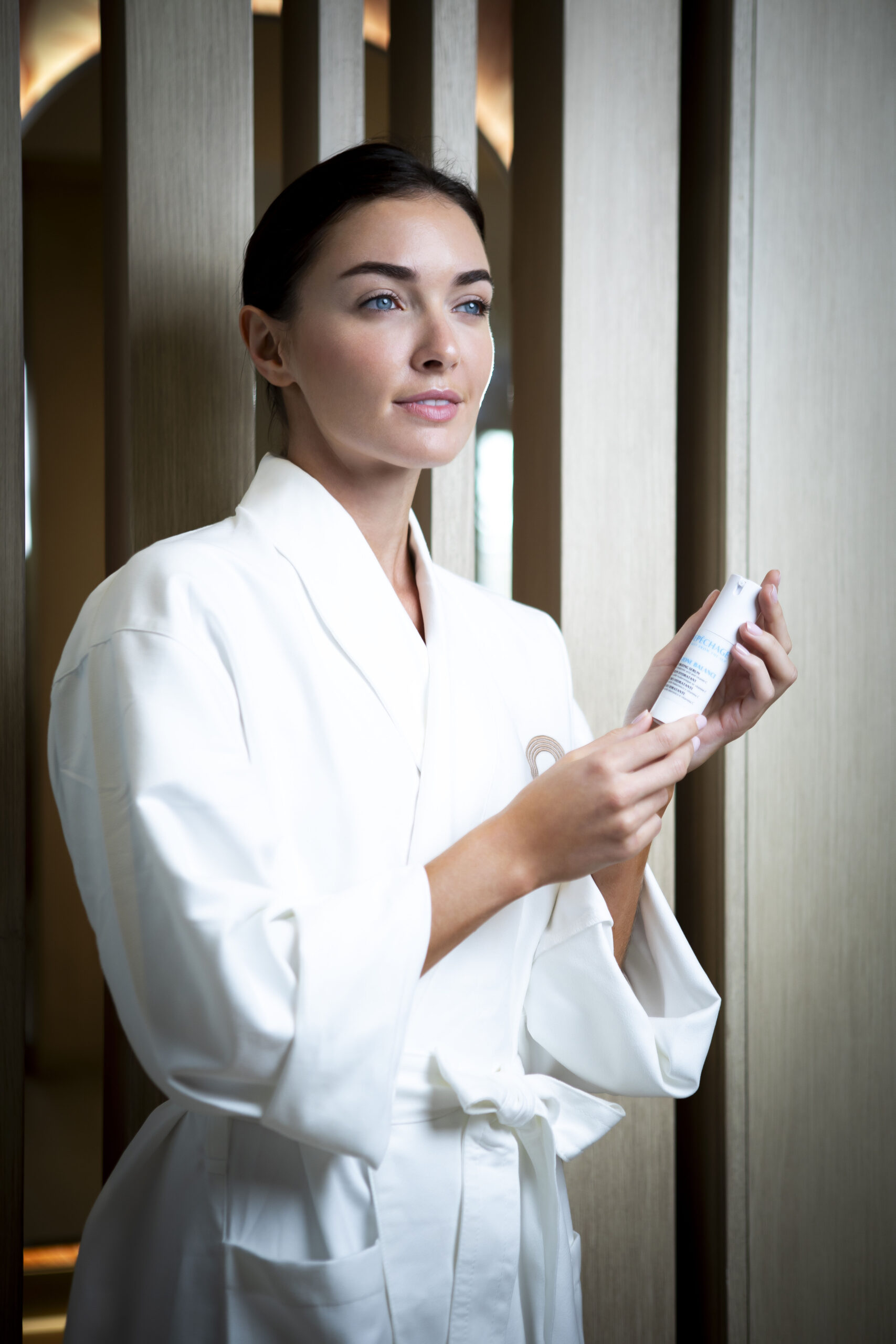
Sodium Ascorbyl Phosphate is a stable form of Vitamin C that provides potent antioxidants while Hypericum Perforatum Extract (St. John’s Wort) is a botanical ingredient that helps to provide balance while soothing the appearance of the skin.
The Repêchage T-Zone Balance Classic Facial incorporates these as well as other balancing ingredients. Based on the Repêchage Classic Facial, this treatment is presented in a unidose treatment to make providing a perfect facial fool-proof. The CIDESCO-endorsed protocol includes steaming, cleansing and toning with pH balancing products. Gentle effleurage massage is performed with a non-oily formula moisturizing cream. An exfoliating Honey and Almond Scrub made from pure honey, oatmeal and almond meal helps to purify and deep cleanse. Proper extractions should be performed according to the types of impactions present, including blackheads, pimples and pustules. Full tutorials on proper extraction method are available on my educational website, www.LydiaSarfati.com.
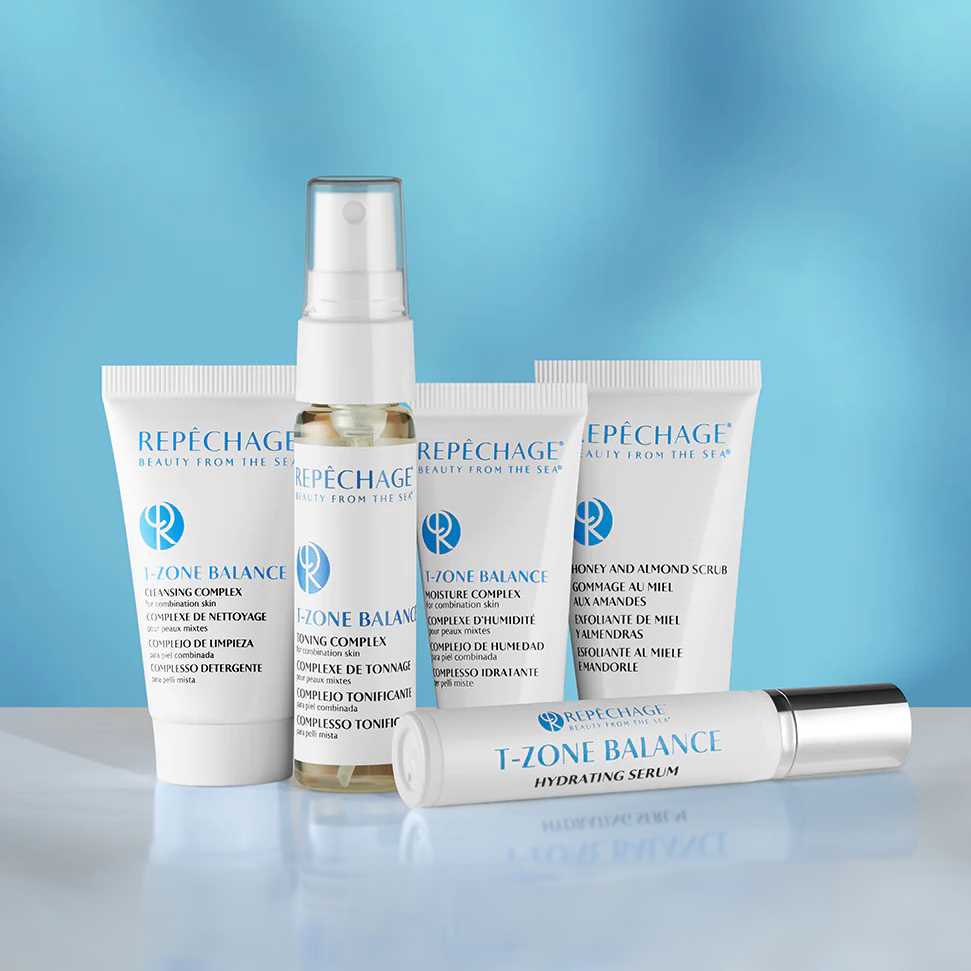
Customizing mask treatments is especially important for combination skin. A deep-cleansing and oil absorbing Repêchage® Balancing Hydrating Mask contains Zinc and Kaolin should be applied to the T-Zone while the drier and dehydrated periphery of the face is masked with Repêchage® Hydro-Moisture Masque, a hydrating formula that contains Seaweed, and Azulene.
Serums are an often over-looked step both in professional treatments and at-home, but are an essential part of the protocol, providing concentrated skin care ingredients in a lightweight form. For combination skin, the Repêchage® T-Zone Balance Hydrating Serum is formulated with Seaweed, Niacinamide, Vitamin C and two forms of Hyaluronic Acid to effectively moisturize areas of dryness and dehydration while maintaining skin balance. The effectiveness of the serum can be enhanced with the use of the Repêchage® LED Radio Frequency and EMS Skin Tightening Machine with multiple light choices to address the different needs of combination skin. For example, blue light can be used to help decrease the appearance of oil on the T-Zone while red light can be used on the drier outer cheek area. This treatment should conclude with Repêchage® T-Zone Balance Moisture Complex that includes ingredients such as St. John’s Wort, Chamomile and Niacinamide to restore pH and balance to the skin. Finally, be sure to recommend an at-home starter kit such as the new Repêchage® T-Zone Balance Starter Collection for Normal to Combination Skin that will help the client maintain their skin in between treatments.
Combination skin can be treated effectively with the proper protocols and formulated products. Learning how to treat this skin concern properly with appropriate professional treatments and at-home product recommendations is a huge opportunity to serve your largest demographic including Generation Z, the future of your skin care business.
